The babies arrive, our family grows
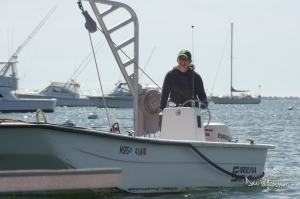 On Tuesday, I was out on the float and got a call from Skip asking me to drive the boat over to the dock (by myself - ack) to check out the upwellers. I made it over there without knocking into anything and found Skip, Mark Bouthillier, Dave Grossman, and Christian Horne all on their knees staring into a couple of gaping holes in the dock. They started renting dock space from the Duxbury Bay Maritime School in the late 90s and have kept their floating upweller systems there ever since.
On Tuesday, I was out on the float and got a call from Skip asking me to drive the boat over to the dock (by myself - ack) to check out the upwellers. I made it over there without knocking into anything and found Skip, Mark Bouthillier, Dave Grossman, and Christian Horne all on their knees staring into a couple of gaping holes in the dock. They started renting dock space from the Duxbury Bay Maritime School in the late 90s and have kept their floating upweller systems there ever since.
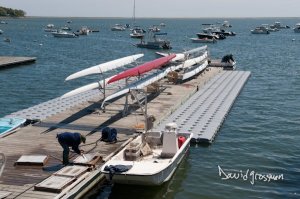
Each upweller has a trough down the middle with pipes running into four silos which sit down the length of the trough on either side. A pump pushes water through the system so that there's a constant flow of fresh bay water. The bottom of the silos are fitted with micro or fine mesh screen so when the seeds arrive we just drop them to the bottom of the silos and let them grow.
This week, Skip got a few orders of seeds from two different hatcheries. They ranged in size from 1.5 mm to 2.5 mm so they're literally the size of grains of sand. But if you could see them up close, each tiny seed looks exactly like a grown oyster. On Tuesday, we dropped about a million into our silo system.
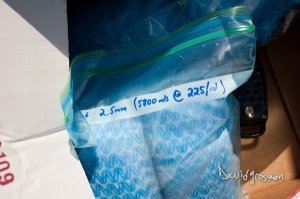
The seed arrived in a ziplock bag; wrapped up in two packets of dry/wet cloth.
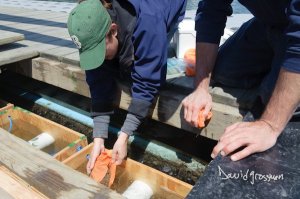
And we carefully unwrapped each packet and dropped them into the silos.
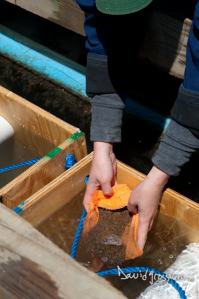
It was a little unnerving and, as cheesy as it sounds, somewhat spiritual. I had hundreds of thousands of those little lives in my hands (all of which determine Skip's future livelihood) and the smallest gust of wind could have carried thousands of them away. They'll stay in the silos for the next few months, getting bigger by the day. My job, as keeper of the seed (latest nickname: Mama Seed-a), will be to constantly clean out the silos and eventually grate the seed (which will all grow at different rates), separating and moving the larger oysters to different silos week after week. Eventually, when they're large enough, we'll drop the seed onto a designated section of the lease to grow "free range" on the bay floor.
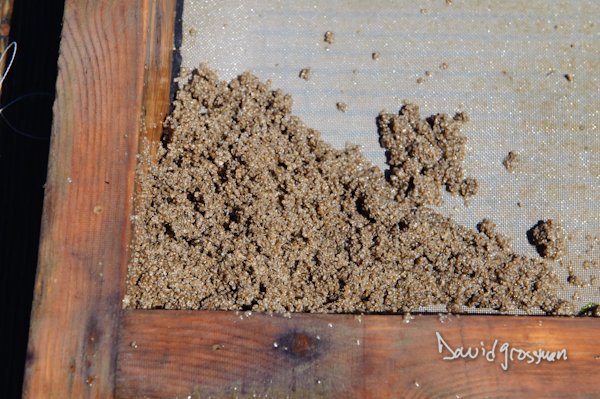
I'm still learning the ropes on the seed but am pretty pumped to be the one to watch it grow each week. We have to keep the trays and silos clean (oysters do poop... a lot) which means hosing down the trays as often as possible. These trays are actually filled with seed we received last week that's been attached to a buoy in the back river. We pulled them in and got them cleaned off before setting the trays back out for another week or so.
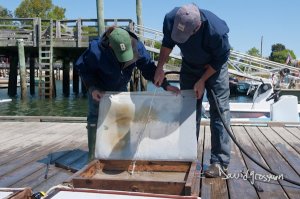
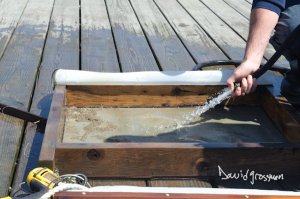
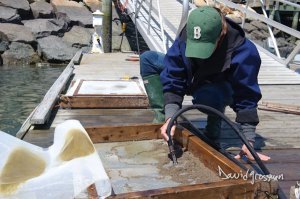
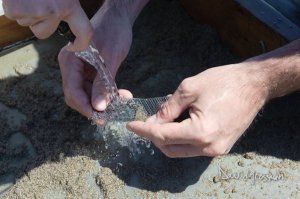
The only downside is that I'll be spending less time on the float with my crew, which has doubled in the past two weeks. We've now added Maggie (in grad school at Brandeis) and Quinn (a journalism major at Indiana University) plus Will (who's taking a short break from GE) to the group. They're all keeping A2, Berg, and I entertained and on our toes. Between Maggie's attempts to storm the fort and Will's goofy, mad scientist humor, we've grown into a big, very happy float family.
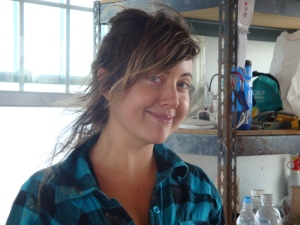
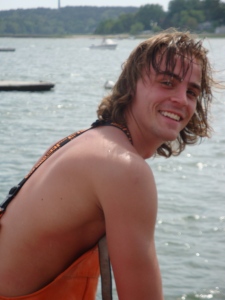
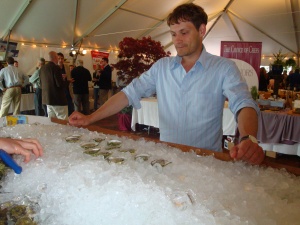
We also saw the arrival of the farm's newest members, six baby chicks. The plan is to build a coop behind the office so the chickens can grow and eventually provide us with blue eggs. For now, they're safely nestled in a cardboard box under a heat lamp in the office.
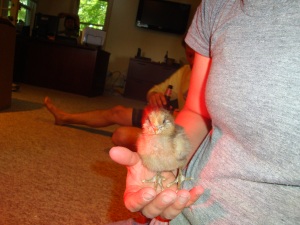
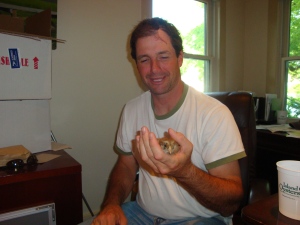
Yesterday, Skip and I took a drive down to one of our hatcheries, the Aquaculture Research Corporation (ARC) in Dennis on the Cape. He was picking up another couple million seeds so I tagged along to get a quick lesson on how our oysters are spawned. On the way down, Skip told me about his background with Dick Krauss, who runs ARC; he was the first person to get Skip his clam seed back in the early 90s and eventually helped him with the oysters, too. Now the two could talk for hours about the ups and downs of oyster farming. While they got caught up, one of the hatchery experts, Sue showed me where and how the oysters are grown. Essentially, they keep the parents, which are about 2 or 3 year-old-oysters, in waters warm enough to cause them to spawn (over 70 degrees, but closer to somewhere in the 80s). They then collect the fertilized seeds and grow them in a controlled environment until they're a couple of weeks old before selling them to farmers like Skip. I learned that you can tell the difference between male and female oysters by looking for a milky white sperm sack inside the oyster belly (haven't tried it yet, though). Under a microscope, Sue showed me an 8-day old oyster as well as a few 3-week old clams. Our batch of oysters weren't swimming, but the clams were and it was incredible, like looking at cells; the clams' legs and byssus threads were squirming like crazy. To the naked eye, they looked like specs of dust but their shells were hard and firm.
I was hoping to get some photos but they're pretty protective of their process (understandably). I'm still not certain on the science behind it all but clearly, these people have provided Skip with unparalleled support. They're one of the main reasons he's had such success with his business and it was clear during our trip yesterday that he is in awe of what they do. I, for one, can't wait to learn more.